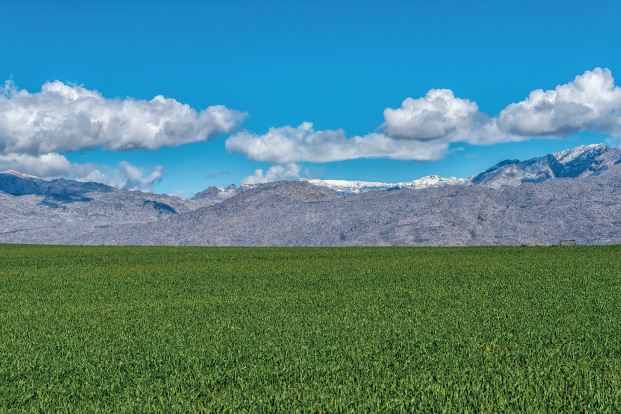Insights into the global grains market

Roundtable proposes a unified, globalised approach to food safety
May 16, 2018
Sorghum making headway in South Africa
July 16, 2018
The global cereal grains market showed an upward trend from 2007 to 2016, expanding by 4% to 2,676 million tonnes in 2016. The cereal grains market grew with a CAGR of +2.6% over the last nine years, according to IndexBox estimates. In value terms, the market kept at the same level of 2015 and stood at $632bn in 2016. From 2007 to 2016, the market value was subject to significant fluctuations against changes in prices, crop yield and global cereal grains reserves.
Maize accounted for the highest share (42% in 2016) of global cereal grains consumption, followed by wheat (28%), rice (19%), barley (5%), sorghum (3%), millet, oats and triticale (about 1% each). The countries with the highest consumption were China (20% based on tonnes), the US (15%), India (9%), Brazil (4%), Indonesia and Russia (3% each), together comprising almost 54% of global consumption. The highest annual rates of growth with regard to cereal grains consumption from 2007 to 2016 were recorded in Brazil (+5.7%) and China (+3.5%).
Amongst the leading consuming countries, high levels of per capita consumption were recorded in the US (1,254 kg/year), Brazil (503 kg/year) and Russia (492 kg/year), while the global average per capita consumption of cereal grains was estimated at 364 kg/year in 2016.
Cereal grains market is set to continue modest growth in the medium term
It is expected that global cereal grains consumption will grow to 3 million tonnes by 2025. In the medium term, consumption of cereal grains will grow at a slow rate (about +1.4% per year), mainly due to increased demand for cereal grains in Asian and African countries.
By 2025, maize consumption will increase to 1.32 billion tonnes. It is expected that maize for feed consumption will grow due to the rapid livestock growth in developing countries. Maize for human consumption will also grow mainly in developing countries, especially on the African continent.
According to expectations, the consumption of wheat will increase to 813 million tonnes. Wheat will be mostly used for human consumption. It is expected that the use of wheat for feed will increase primarily in Asian countries: China, Pakistan and Vietnam. The expected share of using wheat for biofuel production will be about 1% of world wheat consumption in 2025.
Rice for human consumption remains the main way of consuming rice, as this product is a staple food in most Asian countries and is also popular in Africa, Latin America, and the Caribbean. It is expected that the total consumption of rice will rise to 570 million tonnes by 2025 against the backdrop of Asian and African population growth.
In 2016, production increased in terms of volume but remained flat in value terms
Cereal grains production reached 2,701 million in 2016, with a positive dynamic being recorded over the last nine years. Maize accounted for the highest share (42% in 2016) of global cereal grains manufacturing, followed by wheat (28%) and rice (19%).
The cereal grains production value amounted to $637bn in 2016. From 2007 to 2016, the production of cereal grains showed a mixed pattern. Due to the fall seen in exporter prices, cereal grains production in value terms remained stable in 2016, against the growth in output figures over the last year.
The output of the five major producers of cereal grains, namely China (524 million tonnes), the U.S. (486 million tonnes), India (253 million tonnes), Brazil (119 million tonnes) and Russia (103 million tonnes) represented about 55% of global cereal grains output. All main producer countries showed upward trends in cereal grains output: Brazil (+6.7% per year), Russia (+3.6% per year), China (+3.0% per year), the US (+1.9% per year) and India (+1.7% per year).
The US was the largest exporter of cereal grains
In 2016, the volume of global exports totalled 390 million tonnes, which was 3% less than the year before. However, from 2007 to 2016, the global cereal grains exports indicated a steady growth, with a CAGR of +2.9%.
The US (23%) was the main supplier of cereal grains in the world. Besides the US, other major suppliers were Russia, Argentina and France (8% each). All these countries (including the US) together made up a 47% a share of global exports. While Russia’s exports (+8.4% per year) steady increased over the period under review, Argentina, France and the US cereal grains exports were relatively stable from 2007 to 2016. In addition, Russia (+3 percentage points from 2007-2016) strengthened its position in the global cereal grains export arena, while the share of the US (-10 percentage points) decreased significantly.
Japan and China were the main importers of cereal grains
The volume of global cereal grains imports totalled 365 million tonnes in 2016. Imports dynamics was generally in line with exports: globally, these trade flows complement each other. From 2007 to 2016, global cereal grains imports steadily increased, with a CAGR of +2.8%, however, some noticeable fluctuations were observed.
Japan and China (6% each) were the main consumers of cereal grains imports. Except for Japan and China, the main importers of cereal grains were Mexico (15.2 million tonnes), South Korea (14.6 million tonnes), Spain (14.5 million tonnes), Algeria (13.3 million tonnes) and Saudi Arabia (13.2 million tonnes), all these countries together amounting to 32% share of global cereal grains imports. China had the highest growth rates of imports +36.2% per year. Other countries had more moderate growth rates per year: Algeria (+7.1%), Saudi Arabia (+3.0%), South Korea (+2.1%), Spain (+1.7%) and Mexico (+1.5%).
While the share of China in terms of global imports of cereal grains (+6 percentage points) increased, the share of Japan (-3 percentage points) decreased from 2007 to 2016. The shares of the other countries remained relatively stable throughout the analysed period.



